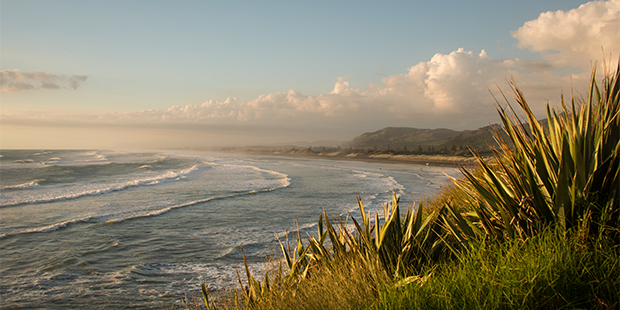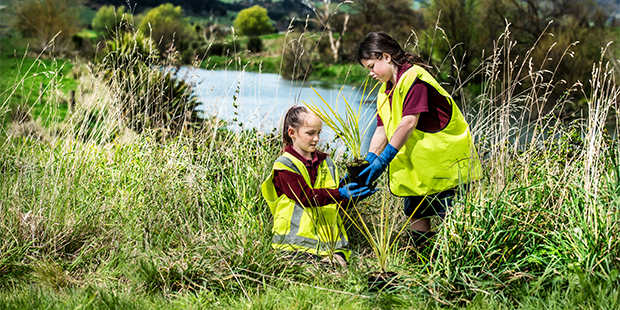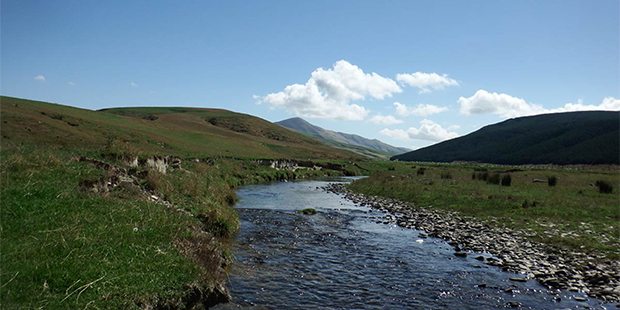Water concerns at popular beach
"Disturbing" water tests at Muriwai lead to suspicion about septic tanks and sewage.


High levels of nitrate flowing into the water at Muriwai Beach on Auckland’s west coast appear to be coming from residential areas.
Although agriculture is usually identified as one of the main sources of pollutants (which include nitrate) into New Zealand waterways, recent water quality monitoring at Muriwai have implicated a different source.
A nitrate concentration of 20mg per litre was found in water flowing to the southern end of the beach “immediately below a housing area” with its own on-site waste water systems. The testing for nitrate nitrogen was conducted by a community group based at the coastal settlement, the Muriwai Environmental Action Community Trust (MEACT).
The current national bottom-line for nitrate in streams to protect ecosystem health is 6.9 mg per litre.
Carried out under the supervision of Auckland Council’s Wai Ora-Healthy Waterways team, the tests revealed the nitrate level in the Kotuku stream further up the beach (which drains a large area of bush and farmland) was 10 times lower, at 2mg per litre.
MEACT spokesperson Janscie Langridge described the results as “horrifying” and “disturbing”. In an article published in Muriwai’s community newsletter The Gannet, Langridge says residents and visitors will be horrified – but maybe not surprised – to learn of this concern over water quality in one of the waterways at the popular surf beach.
She says the most obvious worry is the extremely high level of nitrates in the beach stream flowing directly into the sea near the main carpark: “This is where we often see young children playing; this water fills the pools by the rocks that children are often seen swimming or paddling in.
“Given this flow of water comes directly below a housing area, it is likely the high nitrate level is due to unreticulated sewage disposal systems or poorly maintained septic tanks.”
DairyNZ’s principal water quality scientist, Craig Depree, says: “Nitrates are what has been measured in this instance and although levels are high, they are unlikely to be a risk to people recreating in the stream.
“If the source of nitrates is from septic tanks, of greater concern (regarding human health) is the potential for high levels of microbial pathogens and viruses that may be present in stream water,” he says.
The lower level of nitrate was recorded in the Kotuku Stream at the more remote northern end of the beach, an area popular with dog walkers and strollers. Monitoring here revealed good species diversity including inanga, gambusia, shrimp, damselfly, snails, pond skater and midges - a positive result, says Langridge.
She says MEACT plans to continue water quality testing: “We suspect it is a septic tank issue, but further tests will help us confirm whether it is or not.”

Photo / Supplied.
Photo / Supplied.
If septic tanks are confirmed as the source of the problem, they will join a large number of other New Zealand septic tank systems which have failure rates of between 15-50 per cent, according to the Ministry for the Environment website (2007 figures). There are about 270,000 domestic on-site systems (about 60,000 used in holiday homes) with failure rates meaning between 40,000-130,000 systems fail compliance nationally.
The website adds: “Unfortunately, research shows that many people don’t understand or recognise the importance of managing and maintaining their on-site system, and some are not even aware their wastewater is treated by an on-site system”.
Langridge say while the Muriwai results may be disturbing “we need to focus on individual responsibility and each of us playing a part to achieve better water quality for the Muriwai community.”
The council has offered a free community workshop to give residents tips on how to look after septic tank systems and cleaning products. There are steps people can take in the meantime, including use of natural products to maintain a healthy septic system, undertaking regular checks and maintenance and pumping out a septic tank on a regular basis.
Langridge says the first tests - taken in July - were carried out under the supervision of the Healthy Waterways programme which trains and supports community groups like MEACT: “That was our ‘training’ and from here we take over the testing and inputting of the results into the programme’s Wai Care database.”
MEACT is to be supplied with a test kit and plans to conduct testing at the same waterways - and possibly at other locations - four times a year.
According to the national river water quality network of the National Institute of Water and Atmospheric Research (NIWA), nitrate is the most widespread contaminant in New Zealand freshwater and is a concern for human health (through contamination of drinking water) and the environment. Highly soluble and poorly bound to soils, it is easily transported by rainfall seeping into shallow groundwater, agricultural drains, streams and, eventually, into rivers, lakes and estuaries.
Environment Canterbury says in a report that while farming is a major source of nitrate, wastewater disposal (septic tanks and other sewage and industrial wastewater treatment systems) are also a source.






